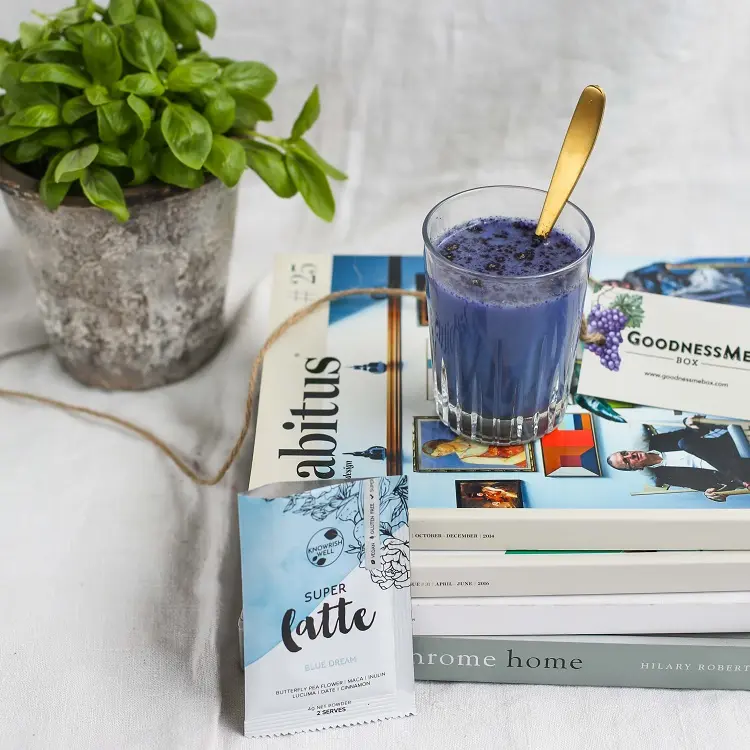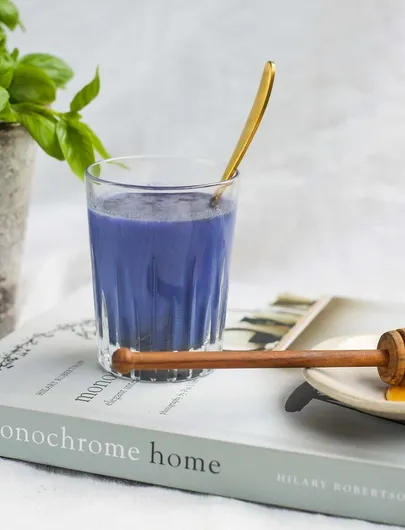You’ve heard of white, green and black tea, but what about… blue tea? One of the most beautiful brews we’ve seen, blue tea is caffeine-free and bursting with health benefits. Whether you want to give up caffeine or just sip your way through the tea rainbow, it’s a fun and colourful cuppa to try.
What is blue tea?
Blue tea is causing a stir in the health world – and it’s not just because it’s pretty! Also known as butterfly pea tea, it’s native to South-East Asia and India, and has been used in Ayurvedic medicine for years. The tea is rich in antioxidants like proanthocynadin and anthocyanin, which work to boost immunity and combat free radical damage. By doing so, it helps to improve the collagen and elasticity in skin. Along with antioxidants, blue tea has anti-inflammatory and anti-glycation properties, making it a great tea to sip on for your skin.
Thanks to the butterfly pea flowers, the tea has a vivid blue colour when blended, as well as a slightly floral aroma.

Blue Dream Latte Mix review
As usual, as soon as we heard about the benefits of blue tea, we couldn’t wait to try it. After some experimenting with products, we’ve landed on a favourite, and lately, we’ve been brewing the Knowrish Well Blue Dream Latte Mix for afternoon tea. Made up of a blend of buttery pea flower, cinnamon and superfoods like maca, inulin and lucuma, the mix is a dreamy blue colour, and seriously delicious. As a bonus, it’s packed with prebiotic fibre for healthy digestion.
We’ve been sipping on it in latte form – it’s good hot or cold, but we’ve been drinking it hot to warm ourselves up from the inside out. The mix is also amazing sprinkled into smoothies, yoghurt and even raw desserts. It’s versatile, so feel free to get creative with it!
Since the butterfly pea flower is naturally sweet, this tea is the perfect afternoon pick-me-up, and free from added sugar, gluten and artificial nasties. If you’re trying to cut down on caffeine or just branch out with your tea, give it a go. Just don’t forget to Instagram your brightly coloured cup of tea first!
Have you tried blue tea before? Let us know what you thought in the comments below!
References:
Immune Health Science. http://www.immunehealthscience.com/proanthocyanidins.html
’International Research Journal of Pharmacy (2012). ‘Anti-Inflammatory, analgesic and phytochemical studies of ‘clitoria ternatea linn’ flower extract.’
http://www.irjponline.com/admin/php/uploads/935_pdf.pdf

